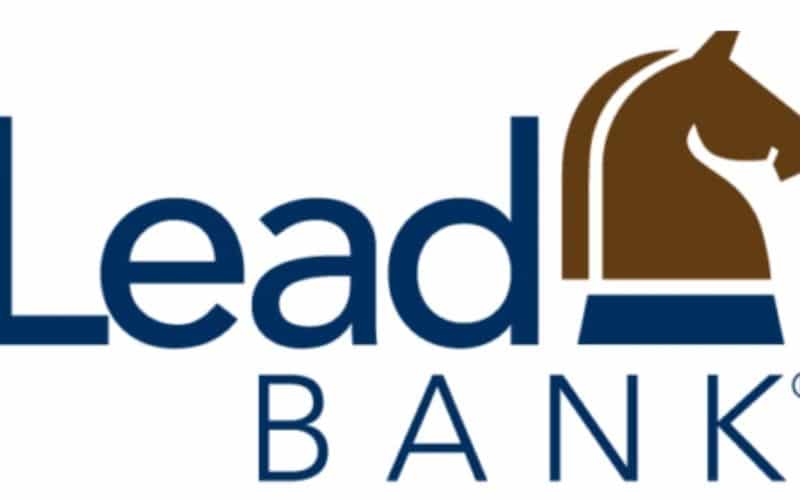Lead bank also known as lead underwriter, is a bank that oversees the processing of loan syndication. It receives an additional fee for this service, which includes recruiting syndicate members and negotiating financing terms. In the Eurobond market, the Lead bank acts as an intermediary for an insurance consortium.
In this article, we have described a lead bank and how it works. We also discussed the role of the lead bank in loan syndication, securities underwriting, and many other important functions.
What is a Lead Bank?
A lead bank is a bank that manages the arranging of loan syndication. The lead bank receives an additional fee for this function, which comprises recruiting the syndicate members and negotiating the funding arrangements. In the Eurobond market, the lead bank operates in an agency capacity for an underwriting syndicate.
Lead Bank Reviews: How Lead Bank Works?
The Lead Bank Scheme, which started in 1969, gives each public and private bank a leadership role in the district they are in charge of.
A bank has a relatively large network of branches in the rural areas of a given district. Usually, it has sufficient financial resources and workforce to be primarily responsible for that district. Accordingly, all sections in the country are assigned to different banks.
The Lead Bank coordinates the efforts of all credit institutions in the assigned districts to increase the flow of credit to agriculture, small business, and other economic activities in the priority sector in the rural and semi-urban areas, with the district as the basic geographic unit.
The lead underwriting bank typically works with other investment banks to form a syndicate of underwriters to create the initial salespeople for a company’s securities. These bonds or stocks are then sold to institutional and private customers.
The lead bank usually evaluates the company’s financials and current market conditions to determine the starting value and amount of shares to sell. The consortium often incurs high sales commissions (up to 6 to 8 percent) for these securities, with the majority of the shares held by Lead bank.
Is Lead Bank a Real Bank?
Simply put, Lead Bank is an independent commercial bank with a focus on helping local residents, businesses, and organizations succeed. It is a scheme that tries to provide adequate banking and credit in rural areas via a “service area approach” in which one bank is assigned to a certain area.
What are the Benefits of Lead Bank Scheme?
To boost the flow of credit to agriculture, small-scale enterprises, and other economic activities included in the priority sector in rural and semi-urban areas, the lead bank functions as a leader for coordinating the efforts of all credit institutions in the designated districts.
Who is Lead Bank Associated With?
The term “lead bank” is commonly used to describe the investment bank that coordinates the underwriting of a security with other financial institutions known as syndicate banks. The lead bank may also be referred to as the lead manager or managing underwriter in this context.
Loan Syndication
What is a syndicated loan? A syndicated loan is a loan extended by several different lenders to one major borrower. Corporate entities, individual projects, and national or international governments are all acceptable borrowers. The lending risk is spread among the members of the lending syndicate, who each provide a portion of the total loan amount. The loan is managed on behalf of the other lenders in the syndicate by the manager (arranging bank). Lenders and borrowers can negotiate for the syndicate to consist of a number of distinct loan types, each with its own set of repayment requirements.
When one borrower needs a large loan ($1 million or more) that a single lender may be unable to supply or when the loan exceeds the scope of the lender’s risk exposure, this is known as loan syndication. When many lenders pool their resources, risk is dispersed and everyone benefits. Each lender’s exposure is capped at their loan commitment. There is only one loan agreement that contains the terms and conditions for the whole syndicate.
Key Players in a Syndicated Loan
Loan syndication often involves the following parties, but this might vary from deal to deal:
#1. Lead Manager
Borrowers typically delegate responsibility for organizing loan funds to a single manager and provide just those instructions in the loan agreement. The bank must find additional lenders interested in joining the lending syndicate and sharing the associated lending risks. Term sheets include the negotiated financial terms between the arranging bank and the borrower.
The loan amount, repayment plan, interest rate, loan period, and any other fees associated with the loan are all specified in the term sheet. The arranging bank will keep the bulk of the loan and will be in charge of allocating payments to the other lenders.
#2. Trustee
For the benefit of the lenders, the trustee will keep the borrower’s assets as collateral. Because it would be too expensive for the syndicate, loan structures that pool money from multiple lenders together try to avoid the need to grant the security to each lender individually. Lenders instruct the trustee to enforce the security in the case of default. In light of this, the trustee’s fiduciary duty is limited to the lenders in the syndicate
#3. Agent
In a syndicated loan, the agent acts as a go-between the borrower and the lender, and as such, has duties to both parties. For the lenders to exercise their rights under the syndicated loan agreement, the agent is responsible for providing them with the necessary information. However, the agent owes neither the borrower nor the lender any responsibility of loyalty or care. Generally speaking, the agent’s role is administrative in nature.
Syndication is the process by which several banks work together to lend money to a single borrower. Loan syndications usually happen when a company needs money for a big purchase, such as a merger, an acquisition, a buyout, or new capital equipment. Loan syndication occurs when a borrower requires a substantial amount of financing that is either unattainable from a single lender or beyond the lender’s risk tolerance.
In such a scenario, a lead bank is often in charge of everything related to the deal, from the original transaction and fees through the compliance reports, repayments over the life of the loan, and monitoring and reporting for all lenders involved. Due to the extensive paperwork and coordination required to process and track loans, lead banks of loan syndications may charge exorbitant fees. These costs may equal 10% or more of the original loan amount.
At different stages of loan syndication and payback, the lead bank will sometimes use a third party and/or extra professionals to help with reporting and monitoring.
Advantages of a Syndicated Loan
The following are the primary benefits of a syndicated loan:
#1. Good Reputation
The involvement of many lenders in financing a borrower’s project reinforces the borrower’s positive market image. Borrowers who have successfully paid syndicated loans in the past earn a favorable reputation among lenders, making it easier for them to obtain credit from financial institutions in the future.
#2. Less Time and Effort
The borrower is not obligated to meet with all of the syndicate lenders to negotiate loan conditions. Rather, the borrower must merely meet with the arranging bank to negotiate and agree on the loan terms. The arranger then undertakes the more involved job of forming the syndicate, bringing in other lenders, and discussing loan terms with them to determine how much credit each lender will commit.
#3. Loan term diversification
Because a syndicated loan is funded by numerous lenders, it can be structured in a variety of loan and security types. The various loan kinds provide different sorts of interest, such as fixed or fluctuating interest rates, making the borrower more flexible. Furthermore, borrowing in many currencies shields the borrower from currency risks caused by external factors such as inflation and government laws and policies.
#4. A Large Sum
Borrowers can use loan syndication to borrow substantial sums to finance capital-intensive projects. A large firm or government can obtain a significant loan to finance large equipment leases, mergers, and financing transactions in the telecommunications, petrochemical, mining, energy, and transportation industries, among others. Because a single lender would be unable to raise funds to finance such projects, putting together numerous lenders to provide funding makes it possible to complete such projects.
The Role of Lead Bank in Securities Underwriting
A group of underwriters, often known as the underwriting syndicate, may be assembled by a lead bank for an initial public offering (IPO) or other types of issuing securities. Underwriting syndicates, like loan syndicates, are formed to reduce individual parties’ exposure to risk and/or to pool resources for a substantial transaction.
Lead banks will look at the financials and market conditions of the company issuing the shares to figure out the initial share price and size of the offering. While the underwriting syndicate may receive a sizeable sales commission on newly issued shares (often as much as 6%-8%), the lead bank will typically receive the greatest allocation of shares.
Lead Bank Reviews: Lead Bank Loan
Lead bank disburses loans to businesses of all kinds. Whether expansion includes brick and mortar, new technology, mergers, new markets, or business succession planning, the bank offers help and support to your company’s growth.
The offerings for business loans include:
- Commercial real estate construction loans
- Business expansion term loans
- Agriculture loans
- Commercial real estate loans
- Equipment purchase loans
- Loan placement
Lead Bank Credit Card
Lead bank Issues Instant- Rewards credit cards. You can personalize your card with one of your own photos for $10.
Why you need the credit card:
- No annual fee
- Competitive rate
- EMV chip-enabled for in-person purchase security
- Enroll in auto bill pay
- Personalize your card with your own photo for $10 (each card)
- Integrated with Lead Bank’s Personal Online Banking
- Download transaction data into personal financial software
- Earn rewards – Get 1 point for every $1 you spend. Points can be redeemed for merchandise, travel, activities, events, account credit, and gift cards.
What lead bank needs to issue you a Personal Credit Card:
- Application (contact a Banker for an application)
- Income verification documents (W-2, pay stub, tax return)
To get a personalized credit card, visit lead bank website
Lead Bank Reviews- Lead Savings Account
The Lead Savings account includes the security of a large bank with the personality of a community bank.
The Lead Savings features include:
- No monthly maintenance fees
- No minimum monthly balance
- Earns interest (contact a Banker for our current rates).
- Free Instant-Issue ATM Debit card with MoneyPass network
Requirements:
- $50 to open
- Limit of 12 withdrawals every quarter
What You Need to Open a Lead Savings Account:
- Driver’s license or other photo ID
- Social security number
- Proof of physical and mailing address (utility bill, government-issued card, etc.)
- Employer/job title/retirement status
Lead Bank Line of Credit
Lead Bank’s flexible and competitive rates allow you to rest easy and focus on your business. You can visit the bank’s customer care service and request their most up-to-date rates.
What you need to apply for a business line of credit, if applicable:
- Most recent and last three year-end financial statements (Balance Sheet and Income Statement) of the business.
- Last three federal income tax returns of the business.
- A current personal financial statement of all business owners.
- Last three federal income tax returns of all business owners.
- Copy of purchase agreement.
How Big is Lead Bank?
Lead Bank is the 39th largest bank in Missouri and is headquartered there in Kansas City. In terms of size, it’s the 1,207th largest bank in America. Since its founding in 1928, it has expanded to employ 102 people across two locations by the year 2022. The Lead Bank is rated as a C+ in terms of its health.






